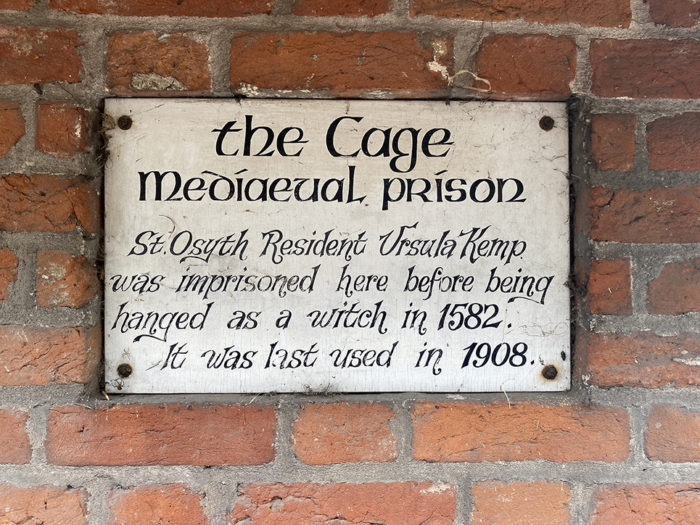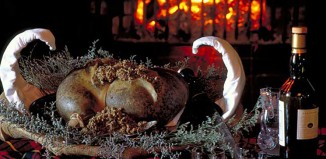Matthew Hopkins: The real Witchfinder General
We uncover the true story of Matthew Hopkins, the Witchfinder General who wreaked havoc in 17th century East Anglia, sending women to the gallows for supposedly being witches
Words: Claire Boobbyer
Young Matthew Hopkins was lowered into an unmarked grave. He had breathed his last, rasping, tubercular breath in his mid 20s on 12 August 1647, 375 years ago.
Unremarkable in death but terrifying in life, Matthew Hopkins grew up in a God-fearing household in Great Wenham, Suffolk, to become Britain’s self-styled Witchfinder General. He believed in a Christian-driven mission to find women feared as witches and provide proof of their witchcraft to send them to trial. Convictions then led them straight to the gallows. Between 1645 and 1647 Hopkins, the son of a rector, and comfortably off with an inheritance, wreaked havoc in East Anglia. He dressed in bucket-top boots with spurs, a broad linen collar, cape, and hat, and was accompanied by his pet greyhound, and sidekick John Stearne.
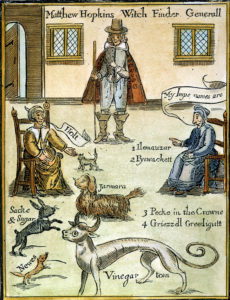
Communities, gripped by fear, invited the duo (who were paid by parish taxes) to gather evidence of women (and some men) who were suspected by their neighbours of casting curses and cavorting with the Devil. At Halesworth, Suffolk, near where I live, Mathew Hopkins investigated a bewitching of the beer at the brewhouse that killed local drinkers. In our newly acquired 500-year-old home, apotropaic marks, aka ‘witches’ marks’ to ward off evil, are carved above our fireplace. The fear of sorcery must have been very real.
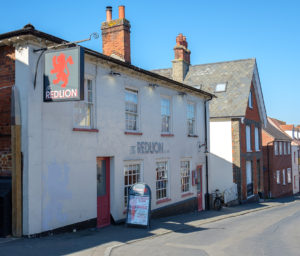
Manningtree and Mistley unfurl along the south bank of the River Stour in Essex. Historian Malcolm Gaskill, author of several books on witchcraft, pinpoints the eye of the storm to Manningtree and the cold winter of Christmas 1644 when a tailor’s wife was struck down by an unnatural fever. The worried tailor summoned a female healer from across the Stour who denounced Elizabeth Clarke, a one-legged widow, as having bewitched his wife. Hopkins, now living in Manningtree, picked up the gossip.
He’d been disturbed by sabbats in the woods – witches’ meetings, held every six weeks on a Friday night. When the news reached his home on South Street, close to the Red Lion pub, that ‘familiars’ or imps (spirits disguised as animals that were consulted and suckled) had been helping Clarke, his ears twitched. John Stearne collected the ‘confession’ of Clarke, presented it to the local magistrate, and obtained a warrant for ‘searching.’
Clarke was arrested and picked over by ‘searchers’, women recruited from the neighbourhood, who looked for marks on her body to prove suckling ‘familiars’ drank her blood. Over the course of three days, she was denied sleep (‘watched’) to see if the ‘familiars’ visited her.
Searchers found three teats in her genital region. Clarke, later, in the presence of Mathew Hopkins and John Stearne, confessed to sleeping with the Devil, and called the Devil’s ‘imps’ into the room. A dog, rabbit, toad, a polecat, and other animals entered. Clarke also denounced a neighbour as a witch.
Providing ‘fixed criteria of proof’, says Gaskill, was crucial. Clarke was sent to Colchester gaol. Her confession and the ‘watching’ experience gave Mathew Hopkins and John Stearne the ‘mandate’ to continue their hunt. Word spread quickly and over the summer of 1645, 150 men and women from Suffolk were identified as witches.
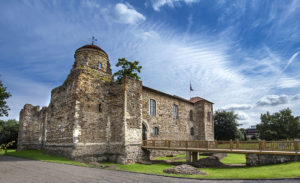
Elizabeth Clarke was among 29 women suspected of witchcraft brought to trial at Chelmsford. Hopkins and Stearne gave evidence as witnesses before a jury who convicted 15 women, including Clarke. Their sentence? To be hanged by the neck. But how did neighbour come to accuse neighbour? “Everybody believed in God, the Devil, the possibility of magic and the reality of magic,” says Alison Rowlands, Professor in European History at the University of Essex. “And if you are going to get one of your neighbours hanged – testifying and going to trial – you had to have a fairly deep investment in the process.”
The roots of the 17th-century witch-hunting craze are found 200 years before in a 101 guide. The Malleus Maleficarum (Hammer of The Witches), published by Catholic German monks in 1486, instructed how to identify a witch, put them on trial, and punish them. It was the second most popular book at the time after the Bible.
Malleus recommended torture to secure confession, that secular courts prosecute witches for heresy, and the death penalty for the convicted. It built on the Church’s teaching, laid down in the Canon Episcopi of AD900. Witchery was forbidden but, crucially, it didn’t declare witchcraft to be real, just a delusion. The publication of Malleus stepped up the brutality and punishment in the 15th century. In 1542 the Witchcraft Act was passed; it was revised in 1563. King James I of England, arch Anglican, and once sceptic of the supernatural, penned Daemonologie in 1597 describing the ‘fearefull aboundinge… of these detestable slaves of the Devil, the witches or enchanters.’ In 1604 the Act was strengthened: invoking evil spirits and keeping ‘familiars’ with the purpose of creating harm was punishable by death.
The testy atmosphere of the 1640s was rooted in a decade earlier of religious conflict when solidly Puritan East Anglia was swept up in the politics and the religion of the day. England, from 1629, was now under the rule of King James’s son Charles I who rejected Parliament and ruled as an absolute monarch by royal decree. He increased taxes and tried to suppress Puritanism. Civil war broke out in August 1642. In Essex, men and women faced off in anger lingering Catholics, war disrupted the assizes, harvests failed and poverty befell many.
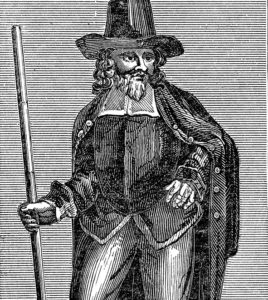
Turmoil percolated through daily life; superstitions and Christian rituals ebbed and flowed. The atmosphere was ripe for suspicions to be cast. This tinderbox led to hundreds being put on trial in eastern England
Into this maelstrom strode Mathew Hopkins and Stearne. They exploited the disruption of the courts and countryside to style themselves as arbiters of justice. Gaskill says their self-styled witch hunt across East Anglia led to around 300 interrogations and 100 executions. But the pair only achieved their mission because local people were complicit in the witch hunt. “They were maverick Puritans,” Professor Rowlands says, “but there was a whole system of complicity – from the Justices of the Peace, local officials, and the accusers. “It’s important to remember,” she says “that all suspects were tried by a court of law. They weren’t tried by Mathew Hopkins and Stearne, and there was no lynching.
“But what happened in particular,” says Professor Rowlands, “is that they offered their services to communities and spread the hunt further than they needed to have done by going around East Anglia. They also used ‘watching’ a lot, which quickly got confessions out of people.”
This is an extract, read the full feature in the October/November 2022 issue of Discover Britain, out on 9 September.
Read more:

